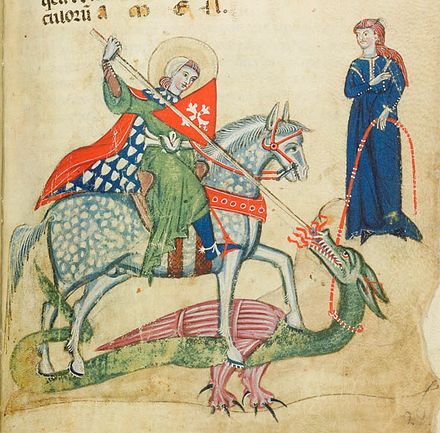St. George was likely born in Cappadocia, and had a noble Palestinian mother. His father, a Cappadocian, may have been martyred, and after his death, George moved to Palestine with his mother. He joined the military there and served with distinction, earning several promotions.
In Eusebius’ Ecclesiastical History, he recounts the martyrdom of St. George. The emperor Diocletian had issued an order that all churches be torn down to their foundations, and that the Sacred Scriptures be burnt. According to Eusebius, “a certain man, of no mean origin, but highly esteemed for his temporal dignities, stimulated by a divine zeal, and excited by an ardent faith, took [the emperor’s edict] as it was openly placed and posted up for public inspection, and tore it to shreds as a most profane and wicked act.” This act enraged the emperor, and St. George was tortured and killed. Although many ancient sources also identify this “man of no mean origin” as St. George, modern historians state this is unlikely.
St. George is usually depicted as a soldier on horseback, slaying a dragon with a lance. This represents a popular legend of the saint, which first appeared in 1265 in a romance, “The Golden Legend.” In the story, George saves a town terrorized by a dragon with one blow of his lance.
The image also symbolizes the powerful victory of Christianity over evil, or paganism, personified by the dragon (an image linked to the devil in Revelations).
St. George is the patron saint of soldiers and of many nations, including Palestine, Lebanon, England, Georgia, and Malta. He is also the patron saint of Boy Scouts, and is invoked by those who suffer from snakebites, skin rashes and diseases, syphilis, and herpes.

